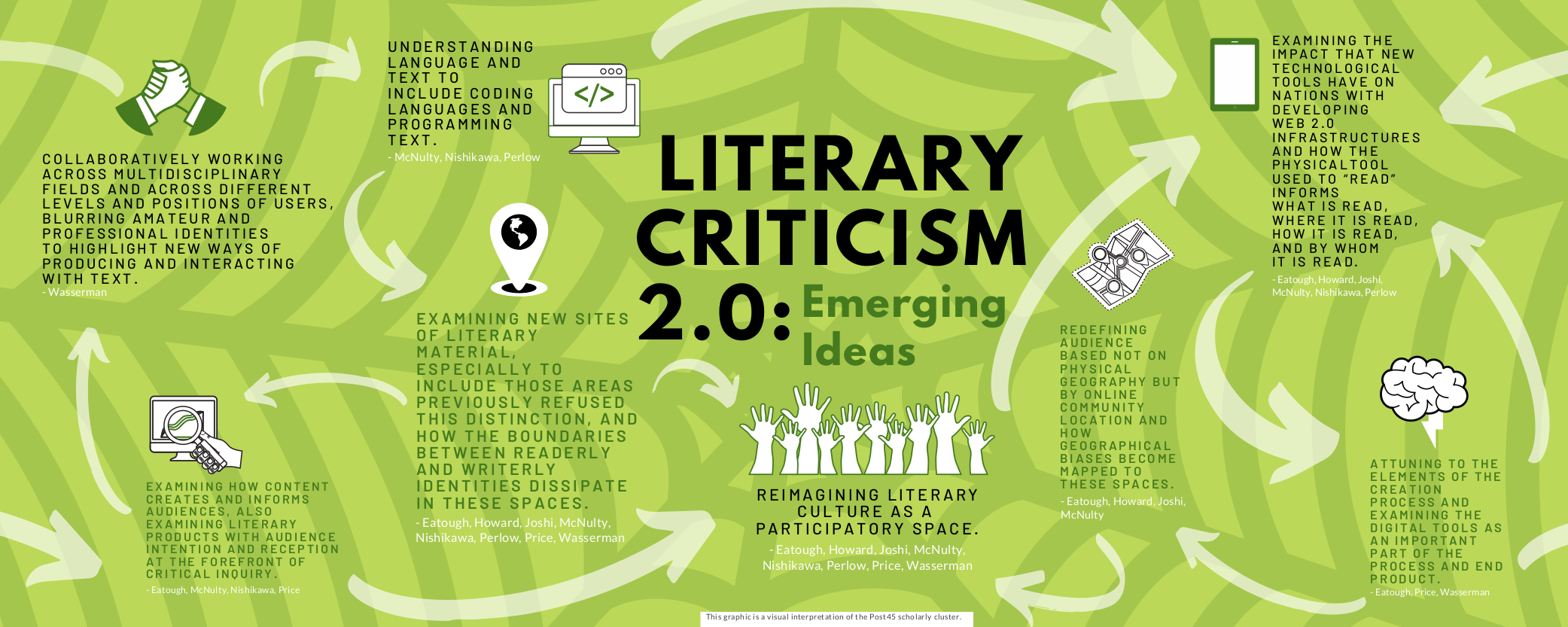Web 2.0 and Literary Criticism
If web 2.0 is a place of participatory culture, user-generated content, interwoven and dynamic applications, and overall ease-of-use for the end-user, then literary criticism 2.0 must adapt. This cluster suggests some ways of doing so. The scholars gathered here suggest that literary criticism should extend beyond "the text" and embrace an expanded notion of "content," attend to media-specificity and social uses of technological platforms, and engage seriously with amateur producers. To illuminate some of those points, I made a visualization of lessons learned.
This info-visualization highlights areas of the cluster to show connections that occur between essays and to blur the line between scholar and scholarship, professional and amateur. By presenting ideas as common to multiple authors, I hope to shake the knowledge free from the concept of ownership, and reveal it as belonging to a communal project.
As an amateur working alongside professionals, the inclusion of my visual interpretation in this scholarly cluster represents part of the argument made in the essays: an imperative to break down barriers that separate amateur voices from the field of expertise. I used Canva.com to make the visual because it is a free application that enables users with little skill in graphic design to create projects, and it exemplifies web 2.0 aspects such as ease-of-use and the nature of participatory culture. As can be seen in the graphic, the placement of the various statements on a webbed backdrop visibly creates lines of connection between the ideas, illustrating the interwoven form of the academic discourse. No idea is given preference over another (though some ideas are attributable to more authors) and there is a sense of a fluidity that emphasizes process over product within literary criticism 2.0. The horizontal, rather than vertical, layout suggests a more rhizomatic clustering of data than a tree-like hierarchy. My visualization suggests, based upon what I gleaned from the cluster, that literary criticism 2.0 must refashion itself: instead of following traditional sequential steps, it must adapt to web 2.0 structures to explore new sites of content.
Scholarship in literary criticism 2.0 is a web within the web, and visualizations enable us to see the strong lines that connect new literary nodes and create the dynamic, ever-growing network of scholarship.
Jared Zeiders is a graduate student at San Diego State University where he is pursuing his M.A. in American Literature with a specialization in New Media studies. He recently received the 2019 SDSU Electronic Literature Award for his digital visual poetic narrative, "Ofermod v.2.2.6" which he will be presenting at the Pacific Ancient and Modern Language Association conference in November.

